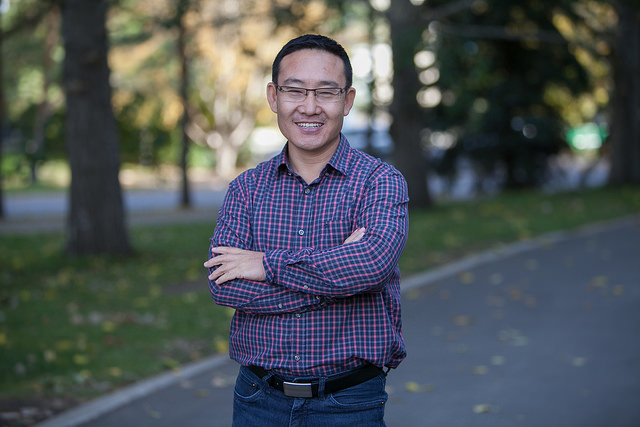
LFCE’s uplifting effect on research
Bill Biligetu is always looking for ways to improve his research. What’s even better is when he can do so while simultaneously lifting up the work of his peers.
By HenryTye GlazebrookAs an assistant professor with the University of Saskatchewan (U of S) College of Agriculture and Bioresources, Biligetu is exploring the grazing tolerance of alfalfa. His method, which involves using mechanical processes to simulate grazing on the alfalfa crops, is working well — but an assist from other departments would help to increase the accuracy of his measurements.
“We’re simulating grazing, so basically we cut the crop three or four times in a year. It’s not really grazing, but it’s somewhat similar. In an ideal situation for this project, some of the animal scientists can [use their livestock to] graze the alfalfa for us. That would be a perfect situation,” says Biligetu, who is also a researcher with the U of S Crop Development Centre.
That’s where the U of S Livestock and Forage Centre of Excellence comes into play. The facility, which aims to unite all areas of livestock production, will offer the unique blend of resources that makes it possible for Biligetu to connect his project with other research studies that complement his own work.
“If we have big enough field plots, then animal scientists can graze using their animals. That’s kind of a selection pressure for grazing tolerance. It’s a really accurate selection pressure,” he says.
Biligetu explains that forage researchers would be able to return the favour by easing the costs of supplying food for cattle in beef studies.
“Eighty per cent of feed is forage. If we can provide something to them, it’s very beneficial to everyone.”
Though this particular study naturally ties together people in forage research and animal science, this overall goal of bringing people together is one that speaks to Biligetu in a fundamental way.
“We’re always emphasizing technology transfer or extension service to producers— who is using our product. That’s the kind of connections we’re looking for,” he says.
Dovetailing of different areas can also improve connections with the producers who will most benefit from the advances he and others are working toward.
“If we can have a forage-animal field tour together, the producers come and see not only animal research studies, but they can also see our forage research plots and understand the newest forage genetics. Then they know for themselves which cultivars are the best possible fit for them rather than going with a third-party recommendation.”
Biligetu stresses that this same emphasis on interconnectivity is one that will usher in an improved educational method for U of S students — the next generation of producers and researchers.
“At the university level, we have so many departments. Plant science students — especially in forage agronomy and breeding — they don’t have a lot of interaction right now with animal science,” he says.
“If we have something like this centre, all the students can exchange ideas among the different departments and with the different professors. They can ask questions. They can do research together. That’s very beneficial to student training.”
All of this adds up to a university that sets itself apart from its contemporaries in Canada.
“If we have this kind of facility and all these specialists, we become … a beacon in Western Canada for forage and livestock research.”

